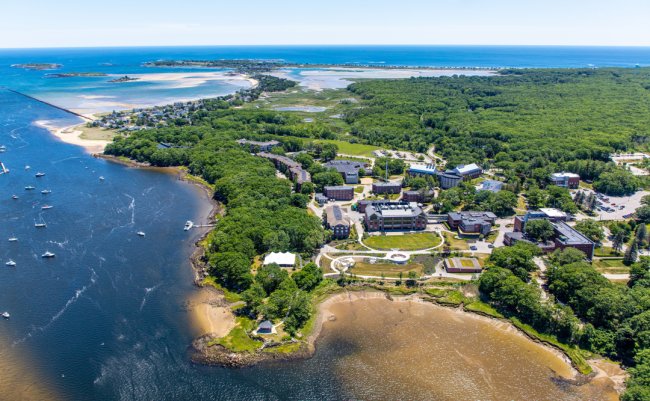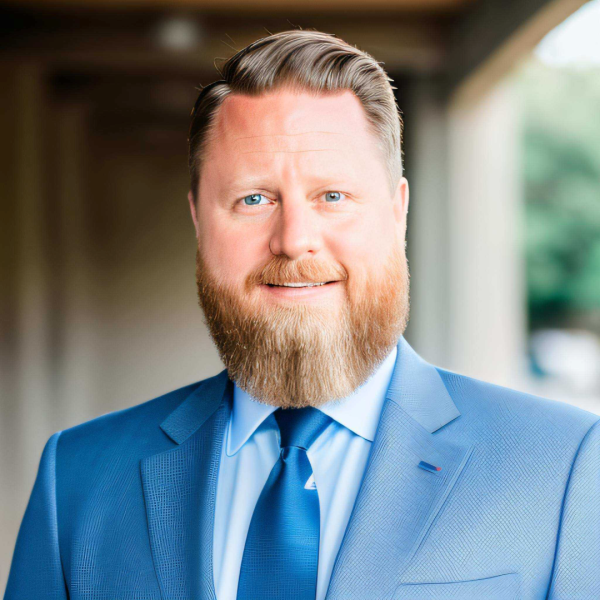You have /5 articles left.
Sign up for a free account or log in.

The University of New England selected Colin David Pears to serve as the newest associate provost for student success and chief retention officer. Pears works at the Biddeford campus.
University of New England
Like many in academia, Colin David Pears stumbled into his career in higher education by accident. Pears had a nontraditional educational upbringing, being homeschooled prior to high school, and he underperformed in his early college career. Pears credits his professors and their support for helping push him to meet his academic goals and, in light of his experiences, hopes to support students and develop programs that better address their needs.

Colin David Pears, associate provost for student success and chief retention officer
University of New England
Pears started as associate provost for student success and chief retention officer at the University of New England in Maine in June, having previously worked at Catholic University of America in Washington, D.C., at the Center for Academic and Career Success.
Pears spoke with Inside Higher Ed about his career trajectory, his philosophy for student success and how higher education can better work to serve the needs of students.
Q: What is your new role and how does it fit into the institution?
A: I report to the provost as the associate provost for student success and chief retention officer. It puts me at the top of the division of student success, where I oversee some of the student support elements, like advising and career support, as well as the student supports in our SASC [student academic success center] office. But more than that, it also puts me at the intersection of where retention is happening across different divisions.
I see my role as the person who is responsible for keeping track of student success and retention across the university. But because I am only one person in one particular role, my attitude toward that role is much more one of a service role. I see an opportunity at the institution to bring people together and facilitate collaboration and [make] sure that we’re all pulling in the same direction to support students.
Q: In addition to working within institutions, you have founded a higher ed consulting company. Overall, where do you see the greatest challenges for student success and retention?
A: When I moved into my private business, I had the opportunity to create the type of support content that I thought would be most impactful but separate from the needs of any particular institution. It gave me the opportunity to focus purely on student and family needs.
One of the biggest challenges that we’re facing is the fact that student needs and family needs are shifting. As a community of higher educators, we need to be responsive to those shifts in the landscape of higher education, whether we’re talking about shifting financial needs, shifting student needs with regard to neurodiversity, or just with respect to the fact that the incoming student population has a different context for success than what we might be more familiar with from classes before.
On the one hand, I feel like one of the greatest challenges has to do with the shifting dynamics of higher ed. The other side of it, though, I think, really has to do with measuring student success and retention.
Q: What do you see as the metrics of student success?
A: Measuring student success is very complicated. There are ways to gauge student success broadly across the university community, but deep success varies from one student to the next.
And that makes sense when you think about the fact that we’re not providing a generic education. We’re offering each student a unique opportunity to grow, learn, develop and define themselves and their future. But the bottom line is that some aspects of student success are quantifiable and some are not.
When it comes to those quantifiable elements, I’m a big believer in data, data-driven measurements and proactive student success strategies. I think that means looking closely at traditional assessments like DFW rates and retention rates, and four- and six-year graduation rates, but then breaking those down along the basis of different population factors. As anyone will tell you, these things help us establish meaningful benchmarks, and they help us track our progress toward institutional goals, and that really does impact students.
But measurement of student success doesn’t stop there, it just gets more complicated. And that’s because there are qualitative aspects of student success that we really can’t overlook if we’re serious about providing student-centered education. And those things don’t happen on a schedule. They don’t lend themselves to traditional measurements; they’re anecdotal and difficult to define. But they’re also very important to consider when we’re trying to gauge impact.
Thinking about this through the lens of my role at UNE, we want students to perform well academically, we want them to retain through graduation. But I’m very fond of saying that we want education to overflow the classroom. We want students to rise to new challenges. We want them to connect with their community, we want them to connect with the greater world that they live in. We want them to charitably engage in civic discourse, and we want them to critically think about different points of view.
If you think about measuring student success over the course of a person’s lifetime, we are only present in this moment in students’ lives. But there are always different ways that we can witness the impact that we have on them over a longer term. And that’s because the impact we have on students should go well beyond their graduation date. So part of measuring student success is looking at that long term and looking beyond those quantitative measures—looking at the networks they build, looking at the work that they take on the movements that they begin, the footprints they leave in a global society, stuff like that.
Q: Silos are common across campus departments, but students are not siloed in their goals and needs. Where do you see the most opportunity for looking at the holistic student?
A: Supporting the whole student is tricky. I think that there’s a habit among some institutions to look at student support, first through the lens of academic success and then through the lens of their well-being. But in reality, there really isn’t that crisp dividing line between these things in students’ lives.
If you talk to people in any area of higher education, they’ll say something like, “I can’t tell you how many times in my academic conversations with students, we’ve uncovered personal struggles that were absolutely relevant to what was going on in their academic life.” And I think you’ll hear that same message from anybody who’s in a student-facing position.
First and foremost, supporting the whole student means treating them like a whole person, allowing whatever is relevant to their success and their development to come up for discussion to be available and on the table, even if it can’t be treated in a truly clinical sense, for example. But after that, it means engaging the campus community in support of students in a way that recognizes them as whole people and provides them access to a range of supports that will meet all their needs.
This is something that I get really excited about, this idea of helping faculty and staff work together cross-functionally to support students. I’m fortunate now where I am, because UNE is made up of a community of so many brilliant and passionate people, all of whom are dedicated to their students. Bringing those people together and helping align their work, they can be more impactful, more developmental, more supportive. I think that’s something we can all get behind. So while these are simple steps, I think that they’re the bedrock of holistic student support.
Q: What is your philosophy for student success?
A: I’m an academic, and so many of my starting points are academic. I try to connect them to the real world, lives, day-to-day experience, and this is probably a good example of that.
Aristotle says, in a particular place, that the soul is, in a sense, all things. For us to reach students, a great teacher has to also try to be all things for students in order to foster their development. In the world of our day-to-day lives, I believe that providing a meaningful education requires what I call an ethic of care on behalf of faculty, staff and administration, and that’s something that that I try to do myself, and something that I try to inspire in other people.
But when you have that element in place, education goes beyond content-based instruction, and it becomes something greater or something transformational, and something that I think really does respond to the student as a whole person. This is, I think, what student-centered education means—it’s an attendance to the whole person.
As someone who benefited from a nontraditional education, I fell in love with this kind of education. I believe that it’s important to capitalize on that sense of awe and wonderment that underlies education, to tap into that curiosity that we all felt as children but which sometimes can be covered up as we get older.
When it comes to student support, when it comes to student success, I have incredibly idealistic goals, and I know that, but I also believe that when it comes to education, we really should be led by lofty goals. And when we are, I think it becomes our responsibility to connect the dots and make these types of things possible for students.
Practically speaking, this means that we need to meet students where they stand, we need to adapt to the changing landscape of student needs and provide resources that require unto them, we need to develop innovative strategies to help students acquire academic and career competencies. We need to help them see the intersection between who they are and what they’re learning and how they can creatively chart a course for the future, whatever that future may be.
Q: What are your goals within your first year at UNE?
A: UNE is unique and different from my previous institutions, insofar as they already have a number of elements in place that are very powerfully supporting students and student success.
My first step in the university has been to analyze and assess to make sure that I understand the landscape, and that I’m laying the framework for good working relationships with all of these wonderful people who are now my colleagues. Moving forward, I’m really looking to identify ways that we can continue to support students, that we can continue to develop the strategies and the frameworks that we have in place where we’re able to foster more collaboration and make sure that people are coming together behind that common purpose of student support. Then moving forward into the longer term, I’m going to start to look for greater opportunities to make a shift, so that we can continue to be responsive to student needs as that landscape of students in higher education continues to shift.
Seeking stories from campus leaders, faculty members and staff for our Student Success focus. Share here.




